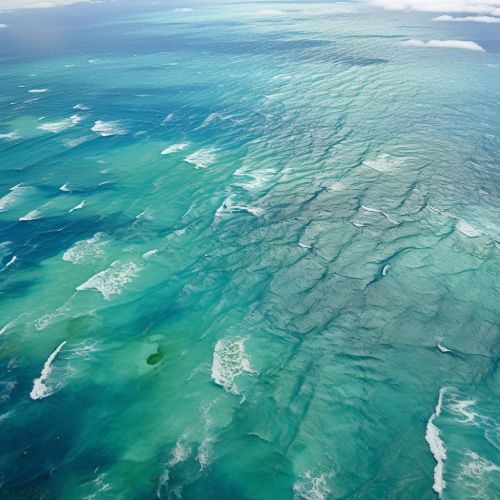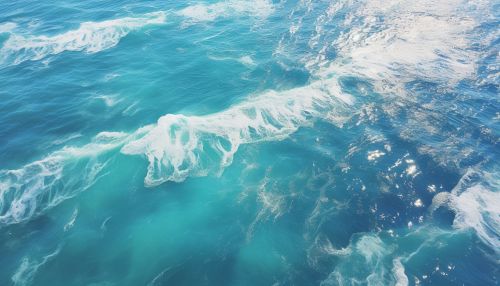Gulf Stream
Overview
The Gulf Stream, a powerful, warm, and swift Atlantic ocean current, originates in the Gulf of Mexico, flows through the Straits of Florida, and follows the eastern coastlines of the United States and Newfoundland before crossing the Atlantic Ocean. As one of the strongest ocean currents, it has a significant impact on the climate of the East Coast of the U.S. and Western Europe.


Physical Characteristics
The Gulf Stream is a western boundary current that extends the length of the Atlantic Ocean. It is approximately 100 kilometers wide, with a depth of about 800 to 1,200 meters. The current's speed varies, but it typically moves at a rate of about 5.6 kilometers per hour, although speeds of up to 9 kilometers per hour have been recorded. The Gulf Stream transports nearly four billion cubic feet of water per second, more than all the world's rivers combined.
Formation and Path
The Gulf Stream is part of the larger AMOC, a system of currents in the Atlantic Ocean that includes the North Atlantic Current, the Canary Current, and the Atlantic North Equatorial Current. The warm waters of the Gulf Stream flow northward off the U.S. coast and then eastward after passing Cape Hatteras. The current then splits into several branches, some of which reach the British Isles and the Norwegian Sea, while others loop back to join the Canary Current.
Influence on Climate
The Gulf Stream plays a crucial role in moderating the climate of adjacent land areas. For instance, it helps to keep the southeastern United States humid and Western Europe warm. The heat carried by the current is equivalent to the output of a million nuclear power plants, significantly affecting atmospheric conditions and weather patterns.
Ecological Significance
The Gulf Stream's warm waters support a diverse array of marine life. It serves as a migration route for various species of fish and sea turtles, and its nutrient-rich waters promote the growth of phytoplankton, forming the base of the marine food chain. The current's influence extends to birds as well, many of which follow the Gulf Stream on their migratory paths.
Human Interaction
Throughout history, the Gulf Stream has had significant implications for human activity. Early sailors used the current to expedite their travel from the New World to Europe. Today, it continues to be a major route for shipping and navigation. The Gulf Stream also impacts coastal industries such as fishing and offshore drilling, and its influence on climate can affect agriculture and other weather-dependent activities.
Changes and Future Outlook
Recent studies suggest that the Gulf Stream is slowing down due to climate change, which could have profound effects on global weather patterns and sea levels. Continued monitoring and research are crucial to understanding these potential impacts and developing strategies to mitigate them.
